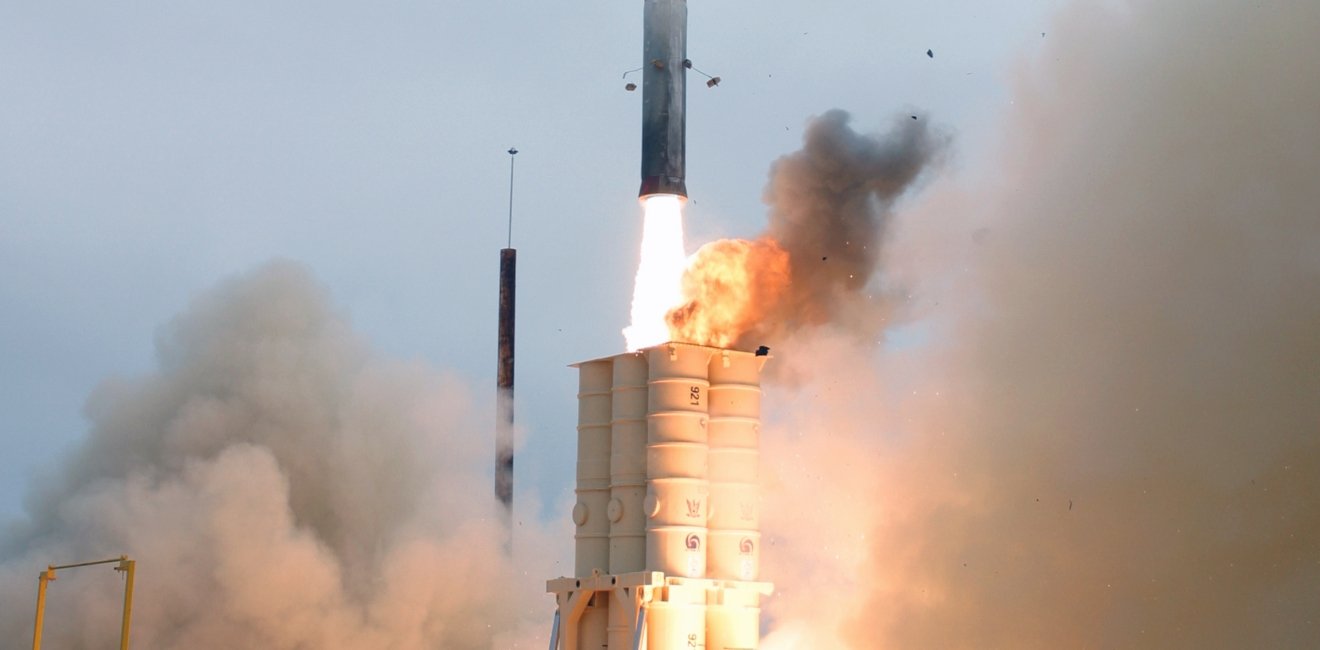When the 1991 Gulf War ended on 28 February 1991, now 30 years ago, the Israel that emerged from the conflict was a profoundly different country than the one that had entered it. For the first time in its history, the Israeli public was faced with a sustained barrage of 39 ballistic missiles aimed at Israeli cities, launched from a hostile country that did not share a border with it. One of the key impacts of this trauma was the change of course for Israel’s controversial Arrow missile defense program, proving for many its relevance and reducing domestic objection to it.
Throughout the 1980s, the top political-military echelons of the Israeli leadership were mostly against the notion of developing an Israeli missile defense system. It was seen as strategically unnecessary and financially burdensome, in part because the missile threat was simply not viewed as a strategic reality. First, it was assumed that Arab leaders would be deterred from launching missiles at Israel due to fear of Israeli retaliation. Second, it was assumed that Arab missiles would be mostly inaccurate and ineffective. A third assumption was that the Israeli Air Force (IAF) was adequately prepared to handle the rise of such a threat, by taking offensive measures to strike at its source. This assumption was founded on the successful IAF strikes against the Iraqi Osirak nuclear reactor in June 1981, and against Syrian SAM systems in the Lebanon Valley in June 1982.
Furthermore, as Israel was going through a financial downturn in the mid-1980s, a massive investment in an expensive defense project was not attractive to the government. When the Arrow program started its life as a joint US-Israel project in June 1986, many in the Israeli establishment were against it.
The Reagan administration viewed it differently. For the administration, co-operation on Arrow, an off shoot of the 1983 Strategic Defense Initiative (SDI), had some political potential, in addition to its strategic prospective. When Reagan first introduced SDI, he envisioned a system of space-based lasers which would intercept Soviet ICBMs. But by 1985 it became clear that such a system was not technically feasible in the short term. The Pentagon began contemplating the development of simpler, ground-based, Theatre Missile Defense (TMD) systems. These would intercept short and medium range missiles and would thus also be better tailored to address the strategic concerns of US allies.
In July 1986, Reagan administration officials discussed the fierce criticism the program faced on Capitol Hill, looking for ways to “convince” the unconvinced. American officials believed that by inviting Israel to join SDI, they would be able to harness the political support Israel enjoyed at the time in Congress. One such attempt was an effort to harness the pro-Israeli lobby in Congress to the SDI wagon. Though it was of limited scope, it is interesting to note the officials involved in it. It took place when the office of public liaison proposed a meeting of “private sector supporters of SDI” described as having “particular interest in the Israeli participation in the research effort” and members of “Committee on SDI and Israel.”
This committee was described internally as a “Washington based coalition of supporters of SDI…who are also concerned and very supportive of the Israeli participation in the research effort.” The planned meeting was described as a “prime opportunity to bolster the public image of SDI.” Secretary of Defence, Caspar Weinberger and General James A. Abrahamson, a retired US Air Force General, who served as the director of SDIO from 1984 until 1989, were both invited to attend it in order to “mobilize support for SDI.” It is not immediately clear whether and how the meeting took place, as no further records of it have surfaced to date.
In the first few years following the program’s establishment, the Israeli government persisted in its refusal to procure the system, limiting its part to development only. In early 1990, following Saddam Hussain’s threat to “burn half of Israel,” the Israeli defense establishment came to see Iraq’s missile program as a serious menace. The public was told that “early warning, deterrence, and civil defenses” were the answer to the threat. On 9 August 1990, as Iraq was sending troops to the border with Kuwait, the first test launch of Arrow was succesfully concluded.
When the war broke out, in January 1991, the US led coalition failed to stop the Scud launches against Israel, leading the Israeli government to seriously contemplate taking offensive measures. On two occasions an operation was considered - but the green-light was never given, as Prime Minister Yitzhak Shamir’s government ceded to the heavy pressure applied by the Bush administration to refrain from action.
Once the war was over, the Israelis had to reconsider their long-held assumptions. One direct outcome of the missile trauma was a renewed domestic interest in the Arrow program. “Today it seems that there is no way around it, a part of the Israeli budget will be allocated to a defensive weapon to protect the civlian population,” summed up Ya’akov Erez, a veteran Israeli journalist. After the war, the Arrow enjoyed growing public support as internal establishment objection to it, though not eliminated, diminished. In March 2017, the Arrow was deployed for the first time, intercepting a Syrian missile.
This blog post is based on an article titled: ‘Arrow’ mythology revisited: the curious case of the Reagan administration, Israel and SDI cooperation, forthcoming, at the International History Review.







